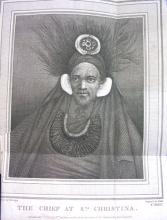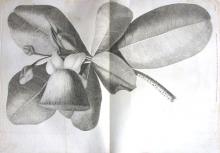James Cook, A voyage towards the South Pole, and round the world (London, 1777)
The first edition of the official description of Cook’s second voyage, and his first as commander of the Resolution (1772-1775). The journey was undertaken in order to further explore the Southern Oceans and ascertain whether there were any further land masses in the southern seas. Whilst doing this Cook was also to test John Harrison’s newly invented chronometer for the measurement of longitude. During the course of the voyage the expedition was to become the first to cross the Antarctic Circle, which it did three times. By the time these volumes appeared Cook had embarked on his second voyage in the Resolution, which was eventually to end in his death on Hawaii in 1779, killed after attempting to take a local chief hostage in return for a stolen cutter. The work is very lavishly illustrated with plates based on the work of the ship’s artist, William Hodges. Such illustration was a way of creating a complete scientific record, prior to the advent of photography, as well as being an attractive feature to a buying public and a matter of great pride to Cook himself who said prior to the book’s publication that “it will be illustrated and ornamented with about sixty copper plates, which, I am of the opinion, will exceed every thing that has been done in a work of this kind”.

